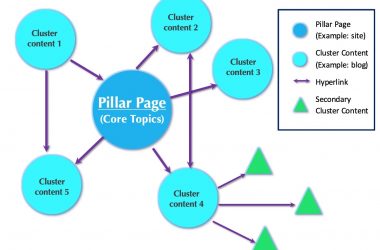In the current market, it’s nearly impossible for a brand to get the right reach without an SEO presence. While your initial take might be to write lengthy blog posts and articles, it might not be the best way to get high on the Search Engines Ranking Page (SERP). Instead of spending hours on research, creation, and publishing, you can instead repurpose content for SEO to maximise your website’s traffic potential. Simply recycling existing content can help you generate new leads and boost your marketing strategy.
Steps on Finding Content to Repurpose
Unfortunately, not all of your content will be reshared. If you’re not sure how to repurpose content for SEO that will, here are some steps you can follow:
Step 1: Set Your Goals
SEO campaigns often have a purpose or goal, such as to start the ranking of a specific keyword or to recover the rankings of an old one. Depending on the services and products of your brand, you might also be working with seasonal SEO.
Having a clear goal would help you determine the strategy of your campaign, such as which angle to choose, how much content to repurpose, etc.

Step 2: Audit and Curate to Repurpose Content for SEO
Go through your content bank to see the different types of content you already have. There might be content that’ll help you, content that might harm you, and some that might do nothing for your rankings. You can use tools like Google Analytics to find your best-performing content. Remember, the things you post should be:
- Informative and useful
- Credible
- Engaging
- High-quality
Repurposing curated content with unique angles can also align with your marketing goals. But you would need to ensure they’re enhanced for the new medium, be it through updated information, current trends or having different insights compared to what they had before.
Step 3: Determine Your Target Audience
Your target audience might not be active at the same time, or may not use the same social media. Repurposing the content on different platforms will give you the power to access new audiences and expose your brand’s products and services to them.
So, learning your audiences’ digital footprint will allow you to reach them best by knowing what type of content they prefer, where and when are they most active, etc. This can also help you choose the best metrics to analyse your SEO campaign.
Step 4: Repurpose Content for SEO
Now, you can start actually working on the content. We have listed some ideas for new layouts or formats that you can try:
- Blogs → Instagram guides/Webinars/Podcasts/Infographics
- Webinars/Podcasts → YouTube videos/Blogs
- Case Studies → Infographics (for Pinterest and Meta)
- How-to guides → tutorial videos
- Tutorial videos → online courses
- Long guides → E-books
- Quora Q/A → blog posts
- Quotes from Blogs → Visuals (to be shared on social media)
- Listicles → Slideshare presentations/mini graphics
Step 5: Embed the link
If you are resharing your old content, then embedded links can create a traffic surge to your old content. Repurposing your content can make it a lead magnet and build positive signals for SEO by helping you build backlinks.
Step 6: Clean House
This may be tedious but it’s important to get rid of content that cannot be repurposed to improve your SEO ranking. It can prevent irrelevant or outdated content from reflecting poorly on your brand, and also ensure you have an easier time repurposing content in the future.
Start Repurposing Content for SEO
Use a little creativity and flair to repurpose content for SEO, and your SERP rankings will thank you. However, these are basic tips and you would need extensive strategies to boost your reach and create the right exposure for your brand’s products and services. If you need help, reach out to our experienced team at SEO Sydney today.


